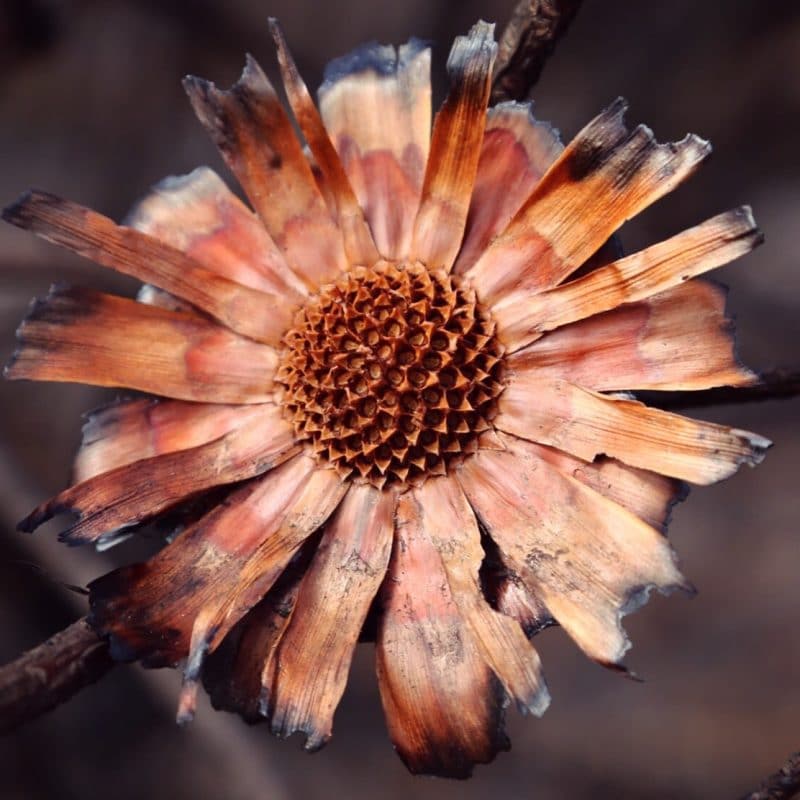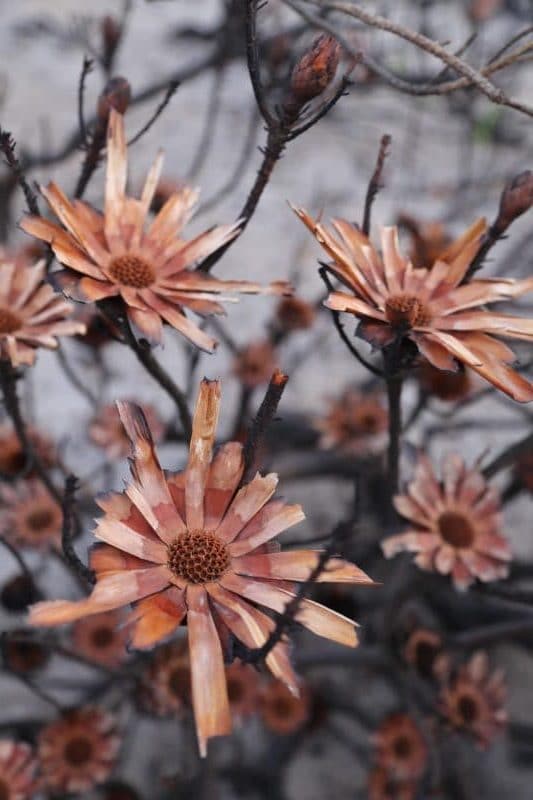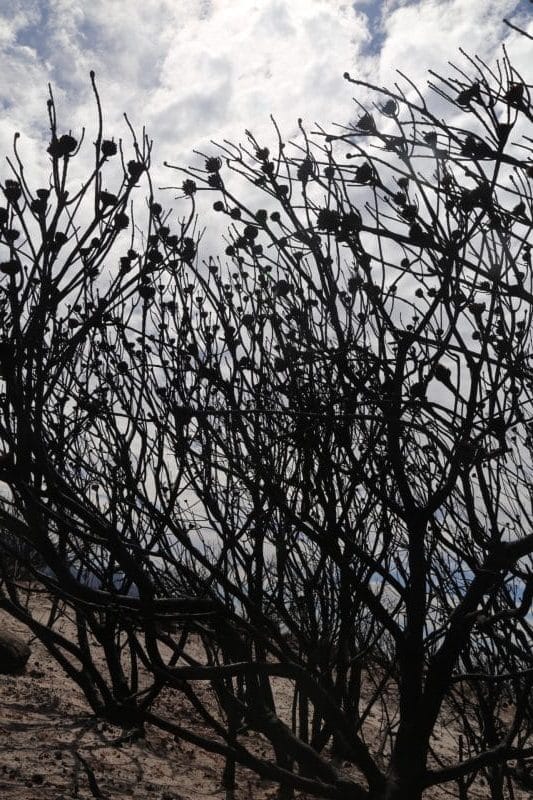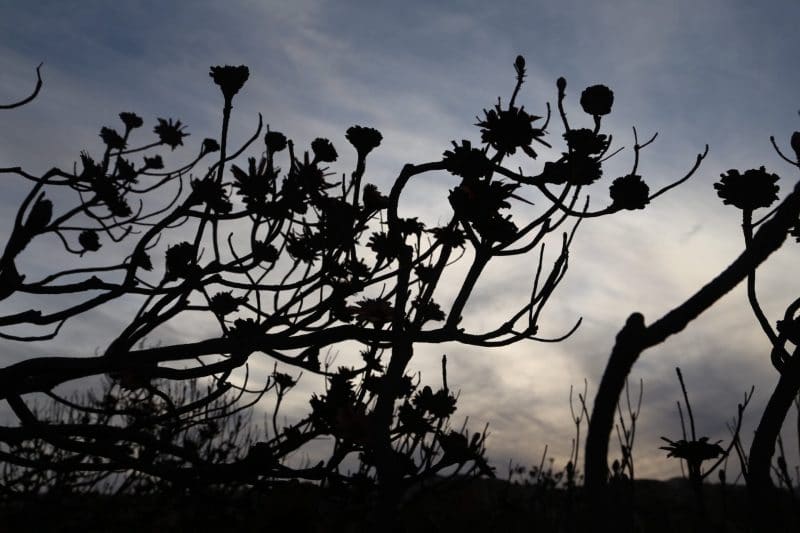Burnt Fynbos
Cape Town hillsides along the coast are covered by South African ‘fynbos’, a belt of wild shrubland vegetation. The floral kingdom has a staggering amount of endemic plant species and a higher level of biodiversity than the Amazon rainforest.

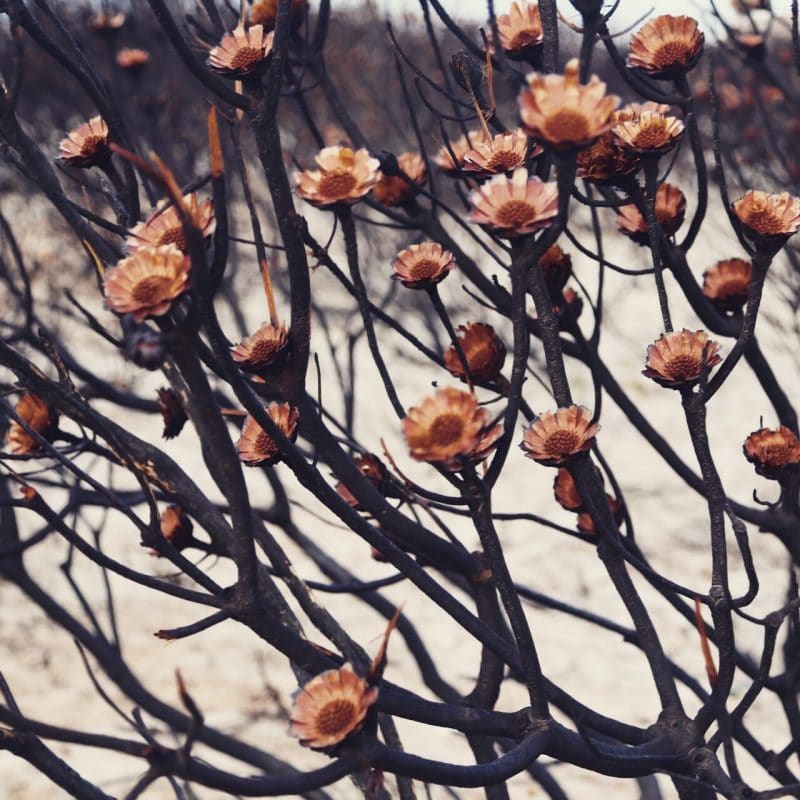
Whilst traveling around Cape Town I was quite shocked by the destruction caused by recent fires which had decimated huge swathes of the fynbos growing on the hillsides. It was quite an extraordinary sight as the contrast of the black charred bushes against the white sandy soil cut striking and dramatic silhouettes. The moody cloudy skies made the scene even more dramatic.
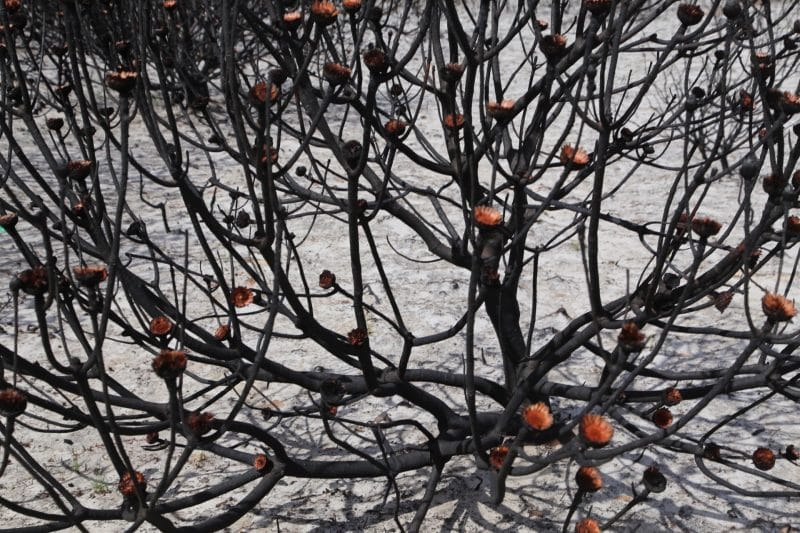
As I ran about taking photos while my family yawned in the car by the roadside (a daily occurrence in my family), I came across a sign explaining that the fires are an important part of the plant life cycle of the fynbos. Regular burning is actually necessary for its persistence. Far from a disaster, fire provides the the crucial trigger that resets the ‘successional clock’ and recycles precious nutrients back into the soil. It provides the stimulus for dormant seeds to germinate and the opportunity for many annuals, and bulbs to grow, flower and seed during times of abundant nutrients and sunlight. The optimal fire cycle for fynbos is between 10-14 years. Shorter fire cycles can wipe out slow maturing species, while species start dying when intervals become too long.
